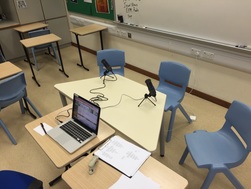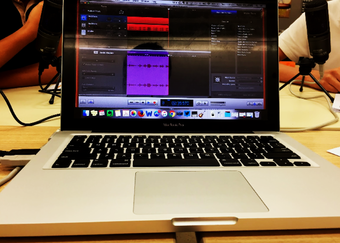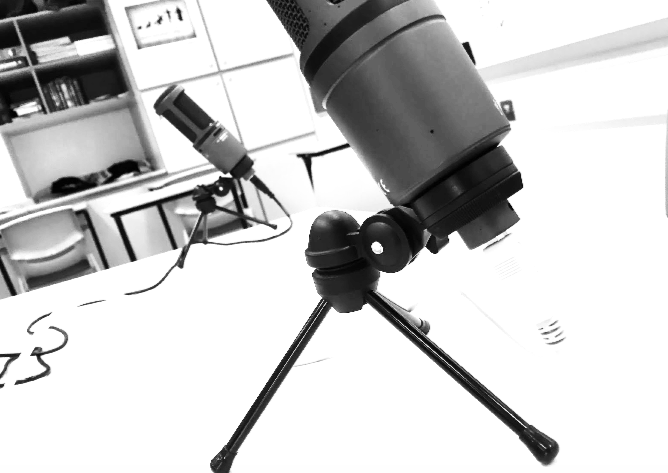Menu
It's time to chase Innovation instead of reacting to the status quo.
-Taylor Williams
|
Overall the process of creating these podcasts has gone really well with the students. It took a few lessons but we got the hang of taking notes as reporters and crafting entertaining, yet informative scripts. The students varied on their creativity within the writing, but it was good to be able to give the students feedback. I had all of the scripts done through Google Drive. If you would like the template I used check out my previous post here. This way I was given commenting rights to where I could give specific and direct feedback to the students. Once we completed the 7 lesson unit, I assigned each group a specific episode that I wanted them to record. I did this by looking at the best script that they had written and compared it to the others. The way it has broken down is that putting all the groups together gives us one complete series for the week we are reporting on. Recording Day The students were told that they would be recording their podcast live in front of the class. This was important because I wanted each group to see each other as they presented. I was strategic about how I set up my classroom. I had a trapezium shaped table with two extra desks pushed together. This created an optimum setup for the microphones, student computers, and my computer which was taking in the recordings. I had the "audience" all sit with their backs to the podcasters. This gave a sense of privacy for those presenting. They were sitting there having a conversation with me, and no one else. That being said I always had one group being evaluated by another. The members of another group were listening to the recording and providing feedback on the podcaster's creativity, accuracy of content, confidence in recording and overall podcast show. This provided extra insight into the quality of the podcast created.
Assessing Student Learning For this project there were essentially 2 ways students were assessed. The first was their scripts. Each group wrote a script for each lesson. In total each group had 7 scripts, ready to record at any time. I went through each script as they were turned in (typically they finished by the end of class) and looked over the structure and understanding of the content that the students were presenting. Then, they would get any feedback that I might have and I would record their grade based on their understanding. The 2nd assessment is the final recording. They are not only being assessed on their understanding of the content but also their ability to present. The podcast is made up into 3 parts: story, investigation and analysis. The investigation and analysis sections are the pieces that are most telling of a student's understanding of the content. Through the investigation I found that there are some students who were very receptive to the content being presented, and that others were not and needed to revisit their episode again. ConclusionOverall this was an excellent project. Students were engaged as they embodied the "news reporter" mentality. In fact, they even started to get really pushy about their questions, like a scene from the White House press room. I believe this project is a good starting point. Improvements that I see needing to happen are more emphasis on the investigations and analysis rather than the story and recap. I also think there is a creative element that I could give the students such as adding intro music, sound effects, etc. As a first time through this project though, I would consider it a great success. We have some exemplar posts located on our schools tech blog if you are interested in the final product.
0 Comments
Leave a Reply. |
About TaylorTaylor currently serves as a Coordinator of Innovative Learning for a mid-sized school district in Texas. He is a speaker, writer, and coach for all who are in conflict with the status quo. Archives
March 2023
|





